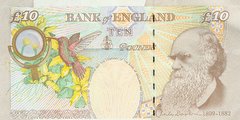Picture if you will the earth's equator, that imaginary line circumnavigating the globe, stretched out into space. It describes a line across the heavenly dome running due east to due west in a great arc. That line is called the celestial equator. If you stood on the terrestrial equator, the zenith of the celestial equator would be overhead. At the poles, the celestial equator would be at the horizon. Now imagine the path the sun makes as it moves across the sky. The line thus described is known as the ecliptic. The earth's rotational axis is tilted about 23.5º from its orbital plane. That is, a line perpendicular to the orbital plane, drawn through the sphere of the planet, makes such an angle with the actual rotational axis. (See diagram.) These two lines, the ecliptic and the celestial equator, cross in two places. Those two places are the equinoctial points--one is the vernal point and the other is the autumnal point. Thus we have the astronomical definition of the equinox. According to the calculating types, the Vernal Equinox happened this morning at 11h 44m Universal Time. That's 04:44 for us PDT folks. Normally we are eight hours behind the Greenwich meridian, but with the switch from standard to daylight time, the difference is now seven hours. (British Summer Time does not go into effect until the end of the month.)
So it is SPRING. Happy Spring, everyone! (I'll try to ignore the thermometer outside telling me it is 32 ºF!)
Another new pitcher
-
"Stockpile starters" is a winning strategy in my book and the Giants have
made another step in that direction. It isn't sexy or flashy, but it's
solid, a...
6 days ago







No comments:
Post a Comment